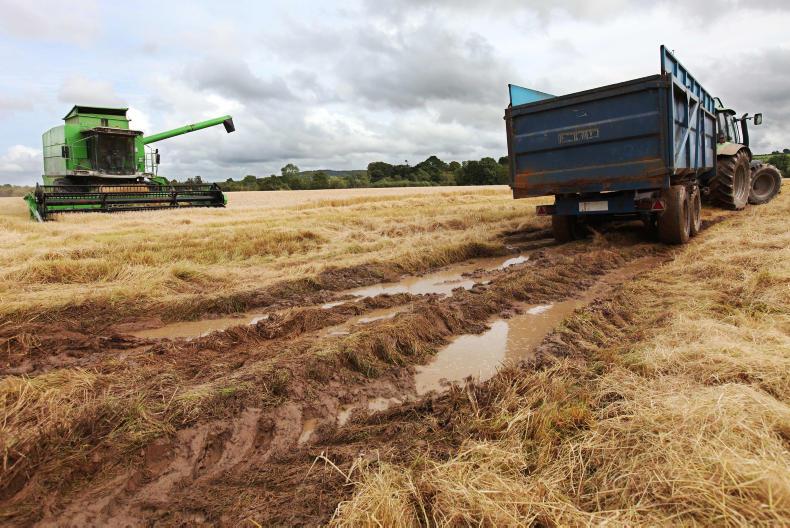
LOYALTY CODE:
The paper code cannot be redeemed when browsing in private/incognito mode. Please go to a normal browser window and enter the code there

LOYALTY CODE:
The paper code cannot be redeemed when browsing in private/incognito mode. Please go to a normal browser window and enter the code there
This content is copyright protected!
However, if you would like to share the information in this article, you may use the headline, summary and link below:
Title: A mixed year for tillage farmers
The outgoing year will bring different memories to individuals depending on the farming system and the geographical location, writes Andy Doyle.
https://www.farmersjournal.ie/a-mixed-year-for-tillage-farmers-333186

ENTER YOUR LOYALTY CODE:
The reader loyalty code gives you full access to the site from when you enter it until the following Wednesday at 9pm. Find your unique code on the back page of Irish Country Living every week.

CODE ACCEPTED

You have full access to farmersjournal.ie on this browser until 9pm next Wednesday. Thank you for buying the paper and using the code.

CODE NOT VALID
Please try again or contact us.
For assistance, call 01 4199525
or email subs@farmersjournal.ie
Sign in

Incorrect details
Please try again or reset password
If would like to speak to a member of
our team, please call us on 01-4199525
Reset
password
Please enter your email address and we
will send you a link to reset your password

If would like to speak to a member of
our team, please call us on 01-4199525
Link sent to
your email
address
![]()
We have sent an email to your address.
Please click on the link in this email to reset
your password. If you can't find it in your inbox,
please check your spam folder. If you can't
find the email, please call us on 01-4199525.
![]()
Email address
not recognised
There is no subscription associated with this email
address. To read our subscriber-only content.
please subscribe or use the reader loyalty code.
If would like to speak to a member of
our team, please call us on 01-4199525
 This is a subscriber-only article
This is a subscriber-only article
Update Success !

The year 2017 will carry different sentiments for different people. Some will remember a good back end in 2016 for planting and growth that set winter crops up with considerable potential for 2017, which many delivered on. For others, a late spring threatened the potential of quality malting and oat crops and when dryness arrived in April and May, along with a fleece of yellowed leaves, most crops appeared to lack promise. Thankfully, the outcome was different.
The big talking point of 2017 was the difficult harvest. Once the weather broke in July, there was virtually nothing that resembled a harvest season – no run of days to get work done and even fewer days for baling. The biggest problems by far were once again in the west, northwest, midlands and north, but the saving of straw was a challenge everywhere.
Straw scarcity became a serious issue for the livestock sector and Teagasc estimates that 10% of the straw was lost. The actual loss was likely to be more than double this because the late baled straw had massively reduced yields.
Some crops were lost as a consequence of the continuous wet where ground conditions prevented harvesting. Many fields suffered soil damage as conditions were just not good enough but crops and straw had to be saved where possible.
While the second half of the year was very difficult, the first half was relatively easy in terms of getting work done. There was some visible crop stress in the dryness of April and May and lots of talk about yellow leaves, especially in spring barley. The fear was BYDV infection. Some were confirmed to have the virus but yields were generally good to very good.
There were fewer visible problems in winter crops but winter barley had a variable year compared with the other combinable crops. Many fields did not deliver their early season promise but winter wheat and oats had a good yield year, as well as excellent quality. Poor weather did eventually affect quality where harvest was delayed.
Whether it was the later than normal spring or the warm April/May or the damp cool second half of the year that drove high yield potential, it would be nice if this could be repeated without the deplorable harvest conditions.
Oilseed rape also benefited and record yields resulted. Potatoes produced very high yields and maize delivered a very good crop. But harvest conditions were challenging for some time.
The big disappointment was grain prices. While they were up on 2016, another record global harvest killed the prospect for a price improvement which had seemed possible earlier in the year.
Difficult planting conditions brought the year to an end and, were it not for a window in November, the 2018 winter acreage would have been decimated.
Sheep kill hits 10-year high in 2017
A wish-fulfilling year for dairy farmers
Cautious optimism as beef kill hits 14-year high
SHARING OPTIONS: